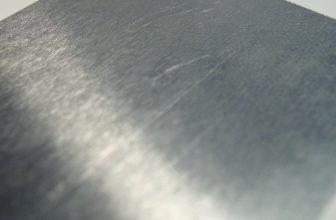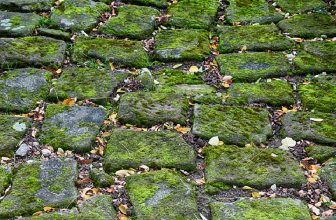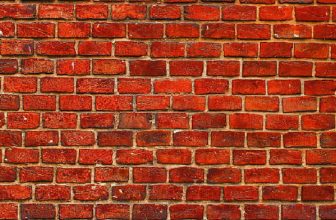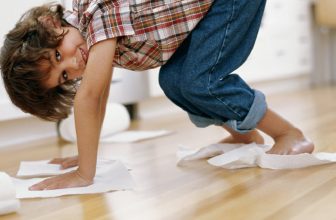How to Clean a Pickleball Paddle
Are you an avid pickleball player, looking for the best way to keep your paddle in tip-top shape? Cleaning and maintaining a pickleball paddle is essential for improving grip on the court and extending its longevity. In this blog post on how to clean a pickleball paddle we’ll go over everything you need to know about taking care of your prized piece of equipment – from cleaning techniques to storage tips – all written with eagerness and enthusiasm!

Whether this is your first time caring for a pickleball paddle or you want some fresh ideas, our guide will have something valuable in store for everyone. Read on to learn how you can keep that lucky paddle at its peak performance level!
What is a Pickleball Paddle?
Pickleball paddles are the essential equipment used in the game of pickleball, which is a blend of tennis, badminton, and table tennis. The paddles come in different sizes and materials but generally consist of a handle and a flat surface made out of wood, graphite or composite materials. It is the primary tool used to hit the ball over the net during a game.
Why Clean Your Pickleball Paddle?
Cleaning your pickleball paddle is essential for two reasons: grip and longevity. The surface of the paddle can get covered in sweat, dirt, and other debris during gameplay, which can reduce its traction on the ball. This reduced grip can impact your performance on the court. Additionally, proper cleaning and maintenance can help extend the life of your pickleball paddle by preventing any build-up or damage that could lead to cracks or breaks.
10 Step-by-step Guidelines on How to Clean a Pickleball Paddle
Step 1: Gather Your Supplies
To get started, you’ll need a few basic supplies:
- Clean Water
- Mild Soap or Pickleball Paddle Cleaner (Avoid Using Harsh Chemicals)
- Soft Sponge or Cloth
- Towel
Step 2: Remove Excess Debris
Using a dry towel, gently wipe off any excess debris from the surface of your paddle. This will ensure that you don’t rub dirt and grime into the paddle during the cleaning process. It will also make the next step more effective. You can also use a small brush or toothbrush to get into the edges and corners of your paddle.
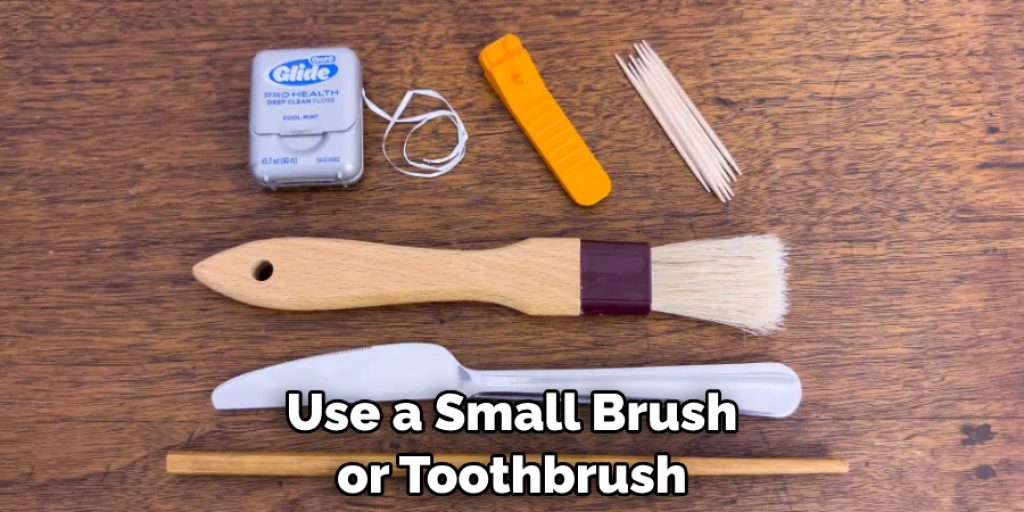
Step 3: Dampen Your Sponge or Cloth
Using clean water, dampen your sponge or cloth. You don’t want it to be too wet, as this can damage the surface of your pickleball paddle. However, you also don’t want it to be too dry as this can make it difficult to clean the surface. It’s essential to find the perfect balance. Otherwise, your cleaning process won’t be as effective.
Step 4: Add Soap or Pickleball Paddle Cleaner
Add a small amount of mild soap or pickleball paddle cleaner to your damp sponge or cloth. Make sure it is specifically designed for use on pickleball paddles and avoid any harsh chemicals that could damage the surface. You don’t want to saturate the surface of your paddle with too much soap, as this can make it slippery and affect your grip.
Step 5: Gently Clean the Surface
Using your damp sponge or cloth, gently clean the surface of your pickleball paddle in a circular motion. This will help remove any dirt and grime from the surface without damaging it. Avoid using any harsh scrubbing motions, as this can scratch or damage the surface. It’s also essential to avoid getting any soap or cleaner on the edges of your paddle, as this could weaken the adhesive around the edge guard.
Step 6: Rinse with Clean Water
Once you’ve cleaned the entire surface of your pickleball paddle, rinse it thoroughly with clean water. Make sure to remove all traces of soap or cleaner from the surface. This step is crucial to prevent any residue from building up on your paddle or affecting your grip. You can also use a damp cloth or sponge to wipe away any excess soap. If you see any stubborn spots, repeat the process until they are removed.
Step 7: Dry with a Towel
Using a clean and dry towel, gently wipe the surface of your pickleball paddle to remove any excess water. Make sure to dry it completely to avoid any moisture remaining on the surface. This step is crucial because leaving your paddle wet can lead to mold or mildew growth, which can damage your paddle. It’s also essential to avoid using a hairdryer or other heat source to dry your paddle, as this can warp the surface.

Step 8: Air Dry
After drying with a towel, let your pickleball paddle air dry in a cool and dry place. Make sure to avoid direct sunlight or heat sources, as this can cause damage. You can also prop the handle up on a towel to allow the paddle to air dry evenly. It’s essential to ensure that your paddle is completely dry before storing it away.
Step 9: Apply a Protective Sealant (Optional)
If you want to add an extra layer of protection to your pickleball paddle, consider applying a protective sealant after cleaning and drying. This can help prevent moisture from seeping into the surface and prolong its lifespan. Make sure to follow the instructions on the sealant carefully and avoid getting it on the edges of your paddle. Otherwise, it could weaken the adhesive.
Step 10: Store in a Protective Case
To keep your pickleball paddle in top condition, it’s essential to store it in a protective case. This will protect it from any damage or exposure to moisture when not in use. Make sure the case is clean and dry before storing your paddle inside. Otherwise, it could undo all your cleaning efforts. Otherwise, your paddle will be ready for your next game!
Following these steps on how to clean a pickleball paddle will help you keep your pickleball paddle clean and in excellent condition. It’s essential to make cleaning a regular part of your maintenance routine to ensure the best performance on the court. With proper care, your pickleball paddle can last for many games to come! Keep practicing and having fun! So go ahead, grab that pickleball paddle and enjoy the game
Do You Need to Hire Professionals?
In most cases, you can easily clean your pickleball paddle at home using the steps outlined above. However, if you’re unsure or have a more expensive or specialized paddle, it may be best to consult a professional.
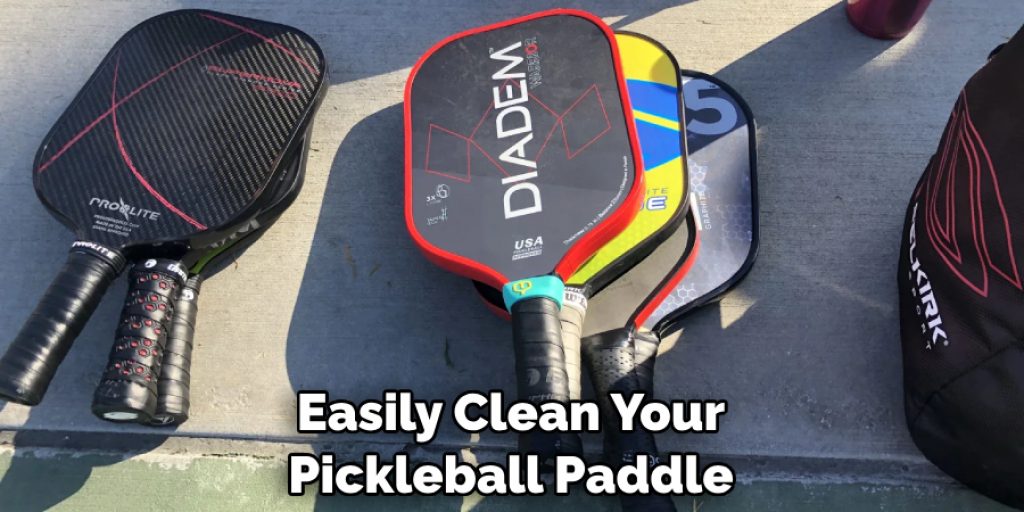
They will have the expertise and proper tools to ensure your paddle is cleaned effectively without causing any damage. It’s also essential to check with the manufacturer’s instructions, as they may have specific guidelines for cleaning their paddles. It’s better to be safe than sorry when it comes to maintaining your pickleball equipment. Happy playing!
Frequently Asked Questions
Q: Can I Use Any Soap or Cleaner to Clean My Pickleball Paddle?
A: It’s best to use a mild soap or specifically designed pickleball paddle cleaner. Avoid using harsh chemicals that could damage the surface of your paddle. It’s also essential to avoid getting any soap or cleaner on the edges of your paddle, as this could weaken the adhesive around the edge guard.
Q: How Often Should I Clean My Pickleball Paddle?
A: It’s recommended to clean your pickleball paddle after every few games or at least once a month. This will help remove any dirt and grime that can affect your performance on the court. It’s also a good idea to inspect and clean your paddle if you notice any buildup or damage.
Q: Can I Use a Hairdryer to Dry My Pickleball Paddle?
A: It’s not recommended to use a hairdryer or other heat sources to dry your pickleball paddle. This can cause the surface to warp and affect your performance on the court. It’s best to let it air dry in a cool and dry place.
Q: Do I Need to Store My Pickleball Paddle in a Protective Case?
A: While not absolutely necessary, storing your pickleball paddle in a protective case can help prolong its lifespan by protecting it from any damage or exposure to moisture. It’s also a convenient way to keep your paddle organized and ready for the next game. Ultimately, it’s up to personal preference whether you choose to store it in a case or not, but it is recommended for added protection. Keep playing and enjoy the game!
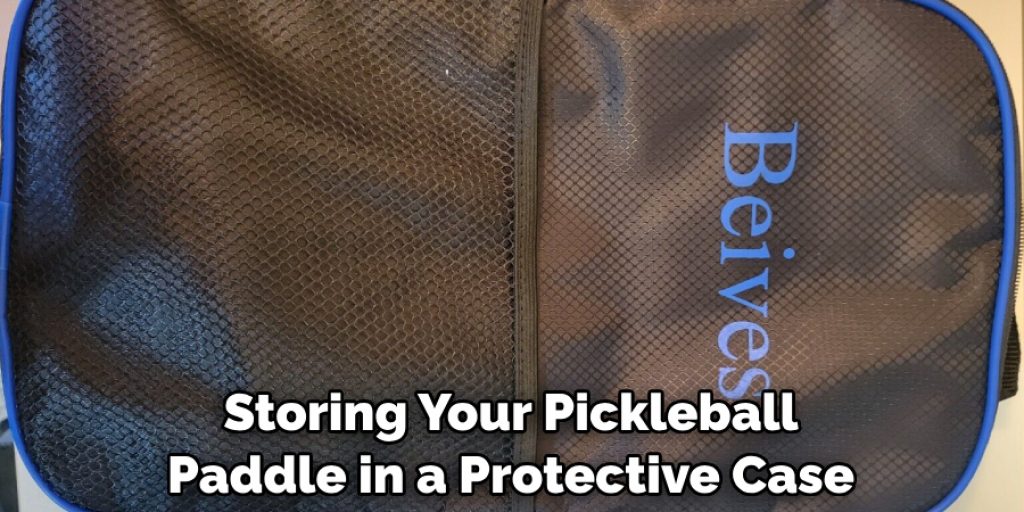
Conclusion
Ultimately, the goal of cleaning your pickleball paddle is to make sure you’re playing with the best equipment possible. Taking care of your paddle is a simple task that over time will make a world of difference. With this knowledge in mind, head to the court, practice your serve and continue smashing pickles!
And if you found this blog post on how to clean a pickleball paddle helpful, don’t forget to share it with family and friends who love pickleball as much as you do—they’ll thank you for helping them keep their paddles clean!

